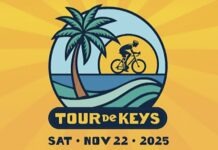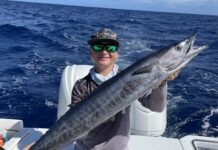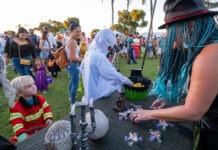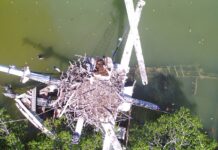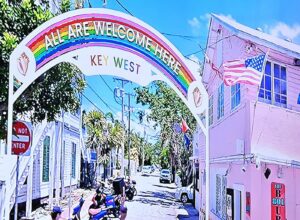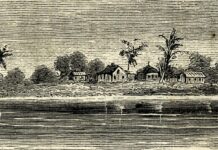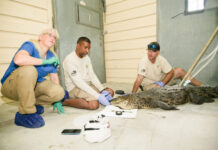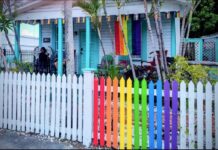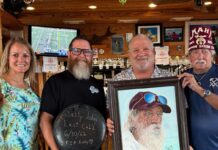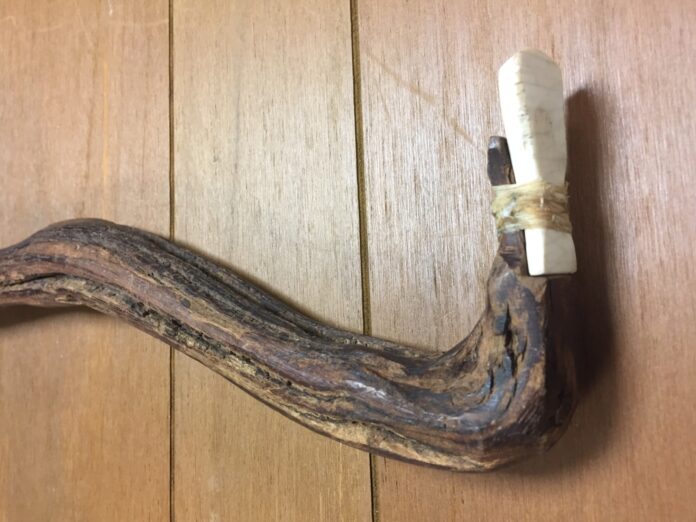
The archipelago scattered beneath the Florida peninsula like a broken string of bushy green emeralds across a wet, blue floor is bigger than it seems. How many islands are there? At the very least, the “jewels” number in the hundreds.
Determining the exact count presents a problematic calculation because at which point does a spit of land qualify as an island?
According to the National Oceanic and Atmospheric Administration (N.O.A.A.) and the Florida Keys National Marine Sanctuary, the archipelago is made up of some 1,700 islands. What that number makes clear is that the string of islands generally referred to as the Keys, the few stitched together first by the steel of Henry Flagler’s Florida East Coast Railway and today by the asphalt and concrete of the Overseas Highway, are a subset of a significantly larger group.
How long have people been living on the island chain? It is well over 1,000 years and probably 1,000 more than that, and maybe even 1,000 more. Exact dates cannot be confirmed. However, what does seem evident is that throughout the indigenous, pioneer and modern periods of human habitation, only a relative handful of the Florida Keys have been called home.
The identity of the first people is surprisingly nuanced and more difficult to pin down than it seems like it should be. The stories told about them are shared by historians, scholars and archaeologists who have dug down and studied all the available information they could unearth. Each has interpreted the data and presented their understanding of it. Some of these histories have stood the test of time better than others.
Because the people who lived here did not record their histories in some written form, the stories most often told about them came from someone who stood on the outside, looked in, and recorded their interpretation of what they saw. It is a fascinating, intriguing and somewhat muddled topic. However, what is generally agreed upon is that the names given to those who first called South Florida and the Keys home are Calusa, Tequesta and Matecumbe.
The Calusa physically occupied the west coast of Florida, between Marco Island and Port Charlotte, and were the most populous and the politically dominant of the indigenous cultures that settled in the southern reaches of Florida and the Keys. The Tequesta lived on the opposite coast, along the rivers in the area of Miami and on Key Biscayne. The people who lived in the Keys, the first Conchs, are remembered as the Matecumbe.
Who were the Matecumbe? Archaeologists and historians who have studied them sometimes categorize them as Shell Indians. Because the local environment did not offer rocks like flint to produce tools, they relied on what was there.
The Calusa, Tequesta and Matecumbe all relied on tools created from seashells. Clam and scallop shells were used as weights for fishing nets, and whelks were used as picks and other digging devices. Conch shells, too, could be used to create weapons and tools and, with simple modifications, musical horns.
The lip of a large conch, like the queen conch, could be fashioned into a tool called an adze. It took work to do so, but when effectively done, the lip of the conch could be “whittled down” to a section with a sharpened edge designed as a scraping tool. One of the things an adze was used for was building dugout canoes.
Creating a canoe from a tree trunk was a crafty project. When a tree was selected, the trunk was laid on the ground, and a small controlled fire was set atop the log. The flames were allowed to burn in a concentrated area and then tamped out. When the embers cooled, the adze was used to scrape away the black, brittle, burnt wood. Then, the fresh wood underneath was set afire, tamped out, and scraped away until, eventually, a depression in the trunk was dug out deeper and deeper. The process was repeated over and over until a vessel materialized.
What happened to the Shell Indians? After a few thousand years of calling South Florida and the Keys home, they disappeared. Not in a flash like some magic trick, but over a devastating period of time, and it took a little help.
St. Augustine is considered the oldest continually occupied European city in North America. It was not the last, as Europeans began to migrate to what they hoped were greener pastures in ever-growing numbers.
Founded in 1607, Jamestown, Virginia, is considered the first permanent English settlement. Like the French Huguenots, the Pilgrims seeking religious freedom traveled to this new land aboard the Mayflower. They landed in 1620. These new settlements were sometimes established on lands where indigenous people had lived for thousands of years. It was for this reason that the Powhatan attacked Jamestown in 1622.
It was not the last time hostilities erupted. Encroachment and attack became a repeated pattern. Also, it did not happen just between the indigenous cultures and European settlers. As native populations were forced from their homes and pushed to relocate, sometimes they, too, encroached on another culture’s land. It is how the Miccosukee and Creek Indians were pushed into Florida and down the peninsula.
Between defending their lands from European occupation, the diseases they introduced, and the warfare ignited between indigenous cultures, good things were never on the horizon. The general consensus is that by the mid-18th century, circa 1760, the indigenous people of South Florida and the Keys were all gone. Where they went is unconfirmed. The last 90 or so Calusas were said to have left with the Spanish to Cuba.
However, it can be imagined that not everyone was willing to give up and abandon their ancestral homeland. It can be imagined, too, that some of these cultures mixed and that faint traces of indigenous blood still flow through modern cultures. This might be one of the reasons the Seminole and Miccosukee people say they have always been here.


